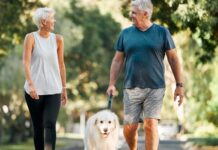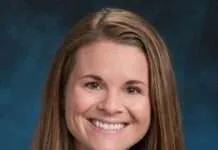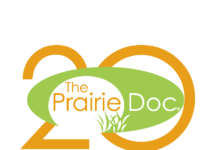By Ron Wilson, director of the Huck Boyd National Institute for Rural Development at Kansas State University.
Let’s go to Brazil, home of the Nogueria brothers, champions of the Ultimate Fighting Contest. During their competitions, these fighters literally take a beating which can result in lots of pain and distress in their joints. When it was time for these Brazilian fighters to seek treatment using stem cells, the place they came for relief was an innovative medical facility in faraway Kansas.
Pat Farley is president of Kansas Regenerative Medicine Center in Manhattan. Pat grew up on a farm in Illinois and entered a career in the animal health business, working for a company which did stem cell treatments for animals.
“I became a crazy believer in stem cells after seeing 10 years of research and excellent results,” Pat said.
Pat’s brother John found his way to the cattle business in Kansas. John and his friend Ken Woods had been involved in sports and had active lives. They were visiting Pat in Arizona and telling him about their ailments. “They had nine knee surgeries between them, and were scheduled for another one,” Pat said.
Then they learned about a human stem cell treatment center in California. They gave it a try. It worked so well that they wanted to bring this type of treatment back to Kansas, where Pat Farley joined them. They contacted Dr. Frank Lyons of rural Manhattan.
“I had retired from radiology,” Dr. Lyons said. “I told them, `You’re going to have to convince me.’” They showed him the research and the results, had him tour the center in California, and he was fully convinced. He was joined in this practice by Dr. Andrew Pope who had grown up in the rural Kansas community of Hoxie, population 1,207 people. Now, that’s rural. In March 2014, the Kansas Regenerative Medicine Center opened its doors.
What is regenerative medicine? It is a field of treatment where a patient’s own stem cells are extracted from the patient’s fat and injected back into the patient to repair a distressed joint, for example. “Stem cells regenerate and repair anywhere in the body,” Dr. Lyons said. When injected into a joint, they will take on the characteristics of the original membrane and reproduce, recreating the body’s original cushioning layer of skin and enabling the joint to function without pain. The stem cells are also injected through an IV which can benefit other areas of the body.
“We’ve had striking results,” Dr. Lyons said. In nearly 200 cases, the treatment has had a success rate of more than 85 percent. Pat Farley himself received the stem cell treatment. “I had trouble lifting a glass of water, and now I can throw a football across a parking lot,” he said. The treatment is also used to treat autoimmune diseases.
These stem cells are adult cells, not the embryonic cells which have been controversial in recent years. The process is completed in an out-patient, one-day procedure under Institutional Review Board medical guidelines. No general anesthetic is required. KRMC specializes solely in stem cell techniques.
Kansas Regenerative Medicine Center is unique in that it is not located in a hospital or other institution. It is affiliated with the center in California and a network of physicians around the world.
“We didn’t want to start until we had the procedure down perfectly, and now we believe we do,” Pat said. Clients come from across the Midwest and as far away as Arizona, New York and Oregon. Many clients are farmers or ranchers or other people with active lifestyles who have distress in their joints, even including the Ultimate Fighting Contest champions from Brazil. “These guys could have gone anywhere in the world to get this done, and they chose to come to Kansas,” Pat said.
For more information, go to www.kansasrmc.com.
It’s time to leave Brazil, home to these world champion fighters who came to Kansas for stem cell treatment. We salute Pat Farley, Dr. Frank Lyons, Dr. Andrew Pope, and all those involved with Kansas Regenerative Medicine Center for making a difference with innovative medical treatments. We hope other benefits will grow from this stem.
——————————
The mission of the Huck Boyd National Institute for Rural Development is to enhance rural development by helping rural people help themselves. The Kansas Profile radio series and columns are produced with assistance from the K-State Research and Extension Department of Communications News Media Services. A photo of Ron Wilson is available at http://www.ksre.ksu.edu/news/



